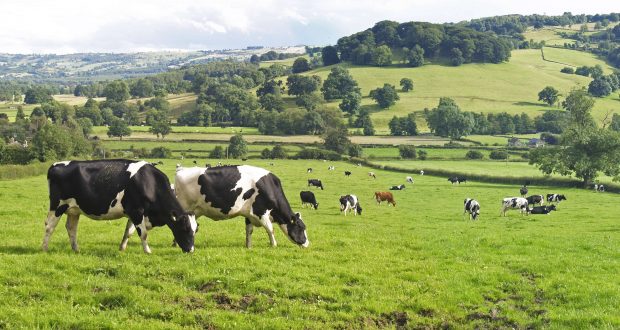DairyNZ: economic report an inaccurate, trivial attack on farmers
The recent NZIER report trivialises the significant role the dairy sector plays in New Zealand’s economy – and fails to look at the specifics of the Government’s freshwater package, according to DairyNZ.
DairyNZ chief executive Dr Tim Mackle said the report, commissioned by Fish & Game, Forest & Bird and Greenpeace, is less an economic report and more a high-level commentary on the dairy sector’s role in the economy – and paints an inaccurate picture.
“This is yet another case of environmental lobbyists targeting dairy farmers – who are people trying to do the right thing by the environment and who are actively working to make changes on-farm to protect it,” said Dr Mackle. “By singling out dairy farmers, they are ignoring other contributors to water quality and, therefore, are limiting our ability to actually fix the problems where they exist.

“The NZIER report trivialised dairy’s role in the economy – 3 percent of GDP equates to 28 percent of merchandise exports and one-fifth of goods and services exports coming from the dairy sector.
“The NZIER report does not analyse the economic benefits of dairy to regional communities – which is a critical aspect of dairy farming’s contribution to NZ Inc. Dairying is the engine of the regions, in terms of income and jobs. For example, it is the top income earner in Waikato, West Coast and Southland.
“Yesterday we saw the latest MPI Situation and Outlook for Primary Industries report which showed dairy makes up $18.1b of $46.4b exports to June 2019. Dairy exports were up $1.47b last year – this has flow-on effects to our communities, where we employ 46,000 people on and off-farm.
Local Government New Zealand (LGNZ) recently completed an advisory report on the Essential Freshwater Package that showed that national limits for nitrogen and phosphorus would potentially impose very large costs on agriculture.
The LGNZ report showed that these goals require an enormous amount of land use change to take place, with many farms becoming uneconomic and communities being impacted negatively due to rural depopulation and a loss of annual income.
“Modelling for Southland showed that achieving a 9 percent reduction in nitrogen loss would reduce dairy profits by $17m a year,” said Dr Mackle.
“In terms of innovation, dairy farmers are an extremely innovative sector but the reality is that all land users play a role in water quality and more than innovation is required – it also needs broadscale adoption by all land users.
“As a sector, we are solutions-focused – and have been for years, and our farmers have been voluntarily working to look after their land and waterways. Our Water Accord shows a range of great progress, including fencing 98% of significant dairy waterways and stock crossing points or culverts for almost all waterways nationwide.
“We all acknowledge there is more work to be done – but we need to work together and recognise when good work is happening and allow time for change to occur.”



